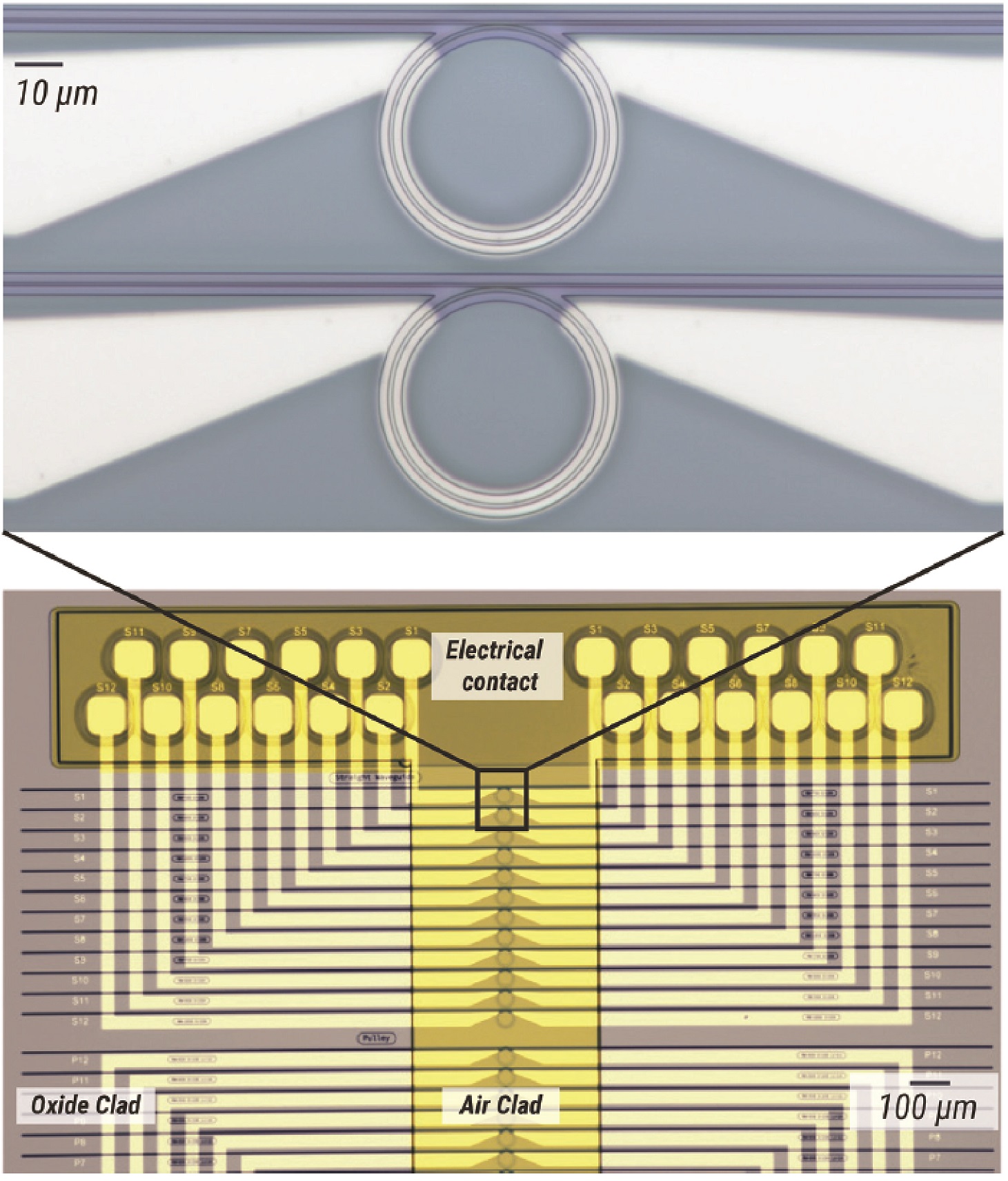
In a recent publication highlighted as a Featured Article and Cover Article in APL Photonics, we demonstrate a new approach to efficient thermo-optic spectral tuning of air-clad microresonators.
Such microresonators are used in a variety of circumstances, ranging from cavity QED with gas-phase atoms to integrated nonlinear nanophotonics, including microresonator combs and optical parametric oscillators. In such situations, the typical approach of integrating the heaters above a top cladding layer fails, because there is no top cladding, and the metal cannot be deposited directly on the resonator due to optical loss. Depositing the metal to the side of the resonator can provide some tuning, but it tends to be inefficient due to the lack of a good thermal pathway to the microresonator.
In this work, we show how to integrate the heaters through a novel fabrication process where they are embedded in a cladding material underneath the resonator. This leaves the top air-clad for the aforementioned applications, while providing a direct thermal pathway between the heater and resonator. In comparison to lateral heaters, we show that these buried heaters are far more efficient, and apply them to the spectral control of broadband microresonator frequency combs.